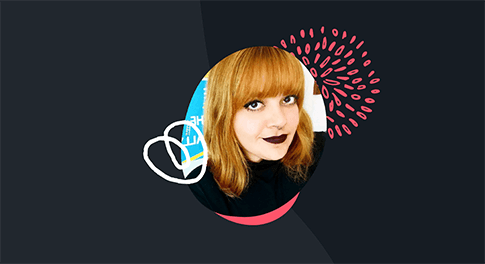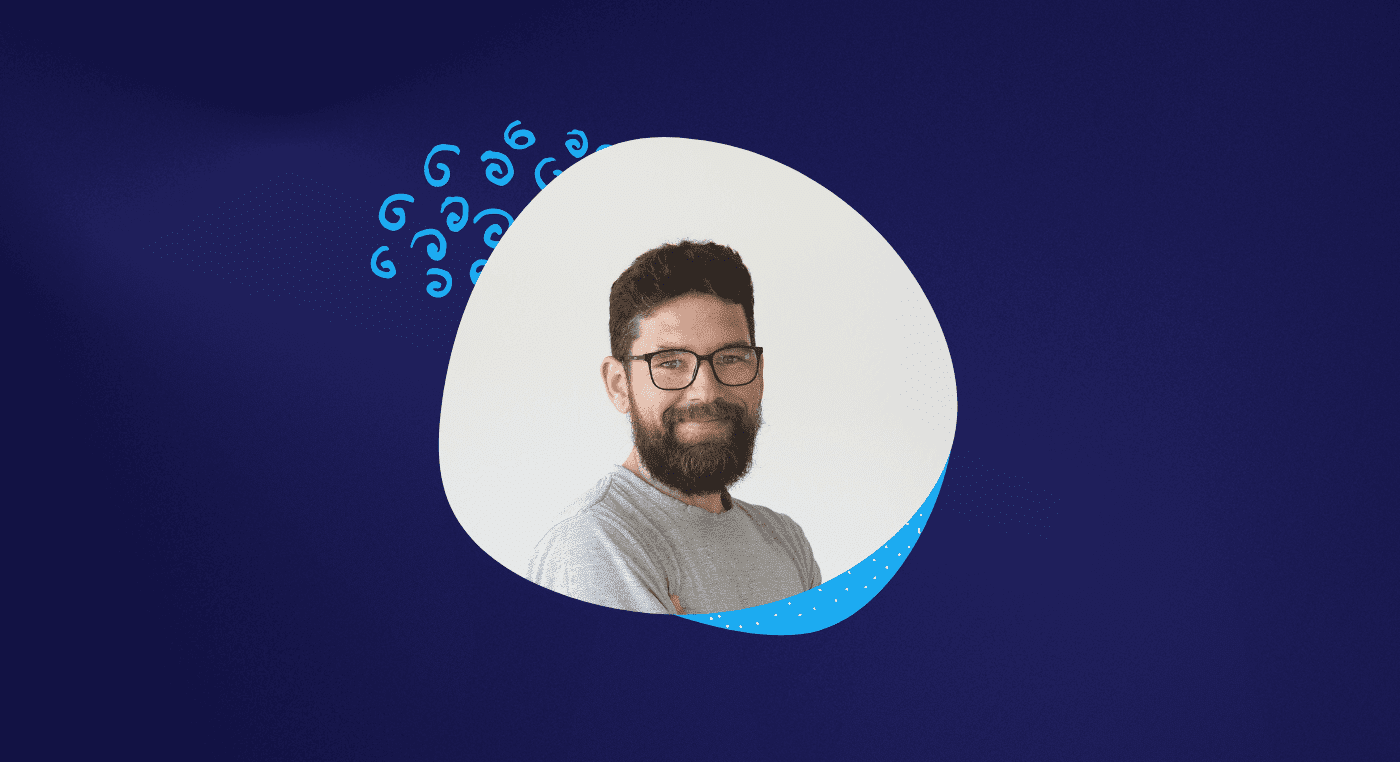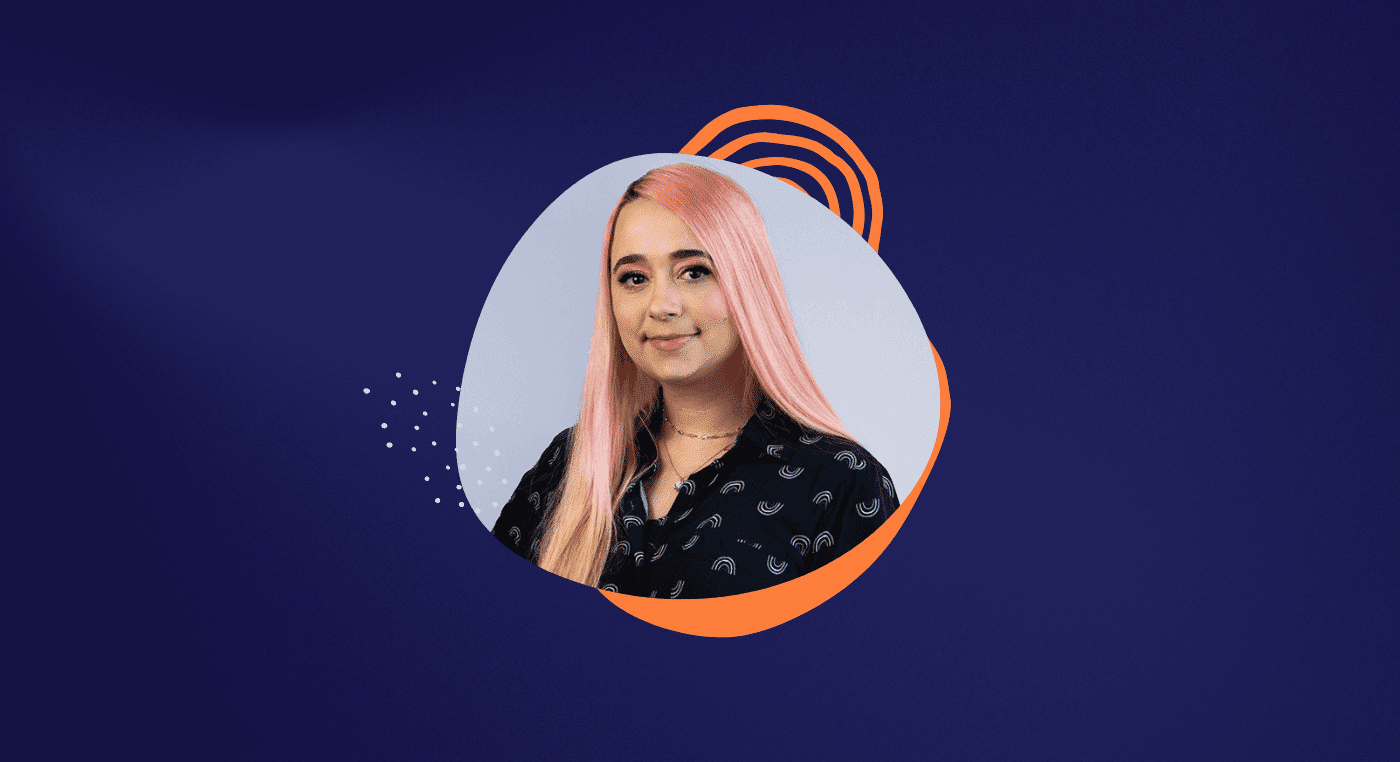In the ever-evolving world of user experience (UX) design, professionals from diverse backgrounds are finding their place in this dynamic field.
One example is Inis, our MID student who embarked on a transformative journey from being a psychologist to becoming a skilled UX designer.
In this exclusive interview, we delve into Inis' unique career transition, exploring the challenges, insights, and experiences that shaped her path. Join us as we uncover Inis' story!
Hello, Inis. To begin with, please share a little about yourself, especially your background, considering you didn't originally come from the design field.
I have a degree in psychology, and I worked in the field for a while, but it wasn't exactly what I wanted. So, I decided to make a complete change and pursue a career in design.
I had some basic knowledge that I had taught myself, like how to use Photoshop, for example. But I needed to gain more technical expertise.
In 2014, I decided to take the entrance exam for a design program, and right from the first semester, I was shocked and thought, "This isn't it; it's not going to work."
I realized that the professors were outdated, and if I were to study on my own through the Internet, I would learn much more.
So I began studying online. That's when I found the Master Interface Design (MID) program and started taking online courses.
I built up my portfolio, applied for job openings, and landed my first job as a graphic designer. It was a position at a startup where I had a lot of exposure to UI/UX.
I'm from Salvador, Brazil, and the tech scene is really behind there. There aren't big companies, and the smaller ones don't even hire designers.
I'm not sure how it is now because it's been two years since I moved away, but back then, nobody knew what a web designer was.
You worked in psychology before. How was the transition to a new profession for you?
It was psychologically challenging. I was involved in research on human behavior and cognition and was already established in the workforce.
But something was missing for me; I wanted to see the practical application of my research. And in academia, publishing articles is the most you can do.
It was a period of uncertainty in my life until I finally decided to make the change. In terms of the job market, it was complicated in Brazil.
Often, I wouldn't mention that I had a degree in psychology on my resume since some interviewers found it strange that I was coming from such a "different" field.
However, subsequent experiences made me realize that my background mattered less than I thought. In fact, in the international market, knowledge of psychology is highly valuable.

Reading tip: How to leverage my background and transition into UX Design
Tell us about your move to Dublin. Did you already intend to work as a designer when you went there?
My husband and I were tired of Salvador. He is a programmer, so it no longer made sense for us to stay in the city. We started researching where we could go, and the fact that we already had European citizenship made the decision easier.
How is the job market for technology in Dublin? Specifically for the web design field.
There are indeed many job opportunities in Dublin. The world's largest companies, such as Facebook and Google, are based here.
You'll find numerous results if you search for "Web Designer – Dublin" on LinkedIn.
However, the challenge lies in the high number of professionals seeking these positions.
It often feels like companies are less inclined to give opportunities to those with limited experience. They know they can find professionals who have already worked in other companies.
I've encountered situations where I met all the prerequisites, but recruiters focused on minor details. There was one specific instance where a recruiter asked if I had experience with Agile methodology. I replied that I didn't, but I understood the concept and was confident in my ability to learn it quickly.
But it wasn't satisfactory for them, and I was disregarded. It's a demanding market with high expectations.
Did you end up working in Dublin even outside the UX/UI Design field?
Yes, I started working as a graphic designer at an agency. Unlike in Salvador, they have a more tech-oriented approach here.
We did a lot of UI/UX work, mainly focused on websites. Although they didn't strictly follow the product-oriented process, we had to test and send the designs to the clients.
We even conducted workshops for larger websites. So, there was some involvement with UX, although it was more simplified.
The MID course helped me a lot because, back in Salvador, when researching job opportunities, I noticed that most of the vacancies required courses in UX/UI. That's what prompted me to enroll in the program.
On my first work day, they assigned me a wireframe to create in Adobe XD. Thankfully, I learned this in the MID program. I wouldn't have stayed at the agency if I hadn't known how to use it.

Reading tip: Student Testimonials: What Do They Say About The MID program?
In the end, you landed a position at Facebook! Please tell us about your experience there.
I applied for a position that didn't explicitly mention it was for Facebook; the description was simply for a Visual Designer. Initially, the job posting seemed vague as it provided little information, but I decided to apply anyway.
It was only during the first interview that they informed me they had selected a few portfolios and that the position would be at Facebook.
They asked if I was still interested and wanted to learn more about my experience, so they gave me a test. The test involved creating a landing page and submitting the code to them. They provided the content, blocks, and all necessary information.
After about two weeks, I was called for a second interview, this time at the Facebook office, with the team I would be working with. I was very nervous during the interview and unfortunately didn't pass. They emailed me saying they liked me but were looking for someone with more experience.
Two months later, I received another email from the Facebook team informing me of another vacancy for the same position. I went through another interview process, and this time, it worked out!

How was your first week on Facebook?
On my first day, I was taken to a small room with other newcomers. It's an average of 30 new people per week there.
We were given a laptop, and they taught us how to set everything up. It was a lot of information! Afterward, the manager took us on a tour and showed us around different parts of the company.
In your opinion, what is the difference between being a contractor and an employee at Facebook?
The main difference lies in the duration of the contract, as contractors work for a predetermined period of time.
In the case of Facebook, there are some restrictions compared to permanent employees, such as limited access to certain information and healthcare benefits.
However, I have never encountered a situation where I needed access to something and was restricted. Apart from that, there isn't much difference.
And do you feel that there is more demand placed on contractors?
For other positions, yes, but not at Facebook. I feel that they prefer to hire within a limited time frame when they want to launch a new project.
Instead of hiring 20 people for something uncertain, they contract a group for a specific period to see if it works out.
And what is your role there?
There are many things I cannot disclose due to it being a new product and the confidentiality agreement.
I work with a Marketing team that focuses on Facebook Games. Many people are not familiar with it. It's related to game streaming and involves collaboration with platforms like YouTube.
So, it involves working with all the sites they have and the people involved in gaming to access information. There are many other projects within this scope. But to summarize, I'm involved in UI/UX design and website maintenance.
They have their own CMS, and we code the website within it, which is quite restricted.
It's been quite a significant challenge because we must create something that functions within various limitations. The process is quite slow.
Reading tip: Documentation in UX Design: Track Information And Communicate Effortlessly
How is the dynamic within your team?
The team consists of 3 Designers. Currently, we are still figuring out the best way to work as the team used to be smaller.
But generally, we have meetings and divide the work for each project.
What about the sign-off process? Is there a hierarchy for approval?
It depends on the project. For smaller projects, it is approved by my team. It's different—it feels like a startup—but you have access to incredible resources.
When I don't know if I can do something, my manager says, "Oh, call so-and-so in the US and ask."
So you schedule a meeting with that person, they receive the notification, and you simply have a conversation with "Jane," who happens to be the head of Department X in San Francisco/US. T
here isn't a rigid hierarchy; it's quite flat, and you can speak with practically everyone.
Now that you're at Facebook, other companies are "wooing" you. How has that been for you?
I think it has a lot to do with the Facebook name. They believe you have the skills they need if you've entered a big company like Facebook.
It's like a certificate that says, "This professional is good." I've noticed that more people are reaching out to me, wanting to schedule interviews. Something that didn't happen before.
Do you plan to continue as a contractor, or do you intend to apply for a permanent position?
I would like to transition to something permanent. That's why I've kept my LinkedIn open for new opportunities.
Reading tip: LinkedIn for Designers: Tips to Boost Your Profile
Regarding the MID program, how do you apply what you've learned in the course, and how do you think it has helped you?
What led me to pursue the MID program was seeing the number of job openings in the UI/UX field during my research.
So, I saw that it connected to psychology and decided to give the course a chance. I was part of the first cohort, and in the beginning I knew nothing. I started from scratch, and it helped me immensely.
From the software aspects to the mindset of considering the user, understanding what you're doing and why you're doing it. It's what saved me in Dublin. I don't think I would have gotten the first opportunity without you guys.
What tips do you have for those who want to enter the UI/UX career?
One tip is fostering a strategic mindset by always considering the user. I think it's what some graphic designers lack. Many people want to focus solely on UI without considering UX.
They want to create something visually appealing without considering whether it works or its purpose. I believe that's the key. Thinking about the user, marketing, and the strategic aspects.
Overall, what I would tell myself is to have confidence in yourself. Even if you don't have much experience in the field, you know what you're doing and that you've studied. I think that's what you need to do: convey confidence in what you're doing.







